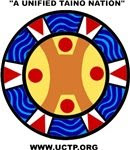Did You Know: Jade is a generic term often used to describe various greenish gemstones found around the Greater Caribbean region, from the islands to the Caribbean-coastal areas of the continent. Archeologists, gemologists and others note there is a distinction between what is termed “true jade” and other stones, sometimes termed “social jade.” True jade includes nephrite and jadeite, which is harder and denser. Jadeite has a range of colors, but nephrite is found in cream and green colors. A related term jadeitite refers to rocks that consist mostly of jadeite, which is used as a carving material. Social jade varies among serpentine, quartz, agates, turquoise, and radiolarian limestone. In the Antilles, these stones were used by the Indigenous Peoples of the region to produce and or distribute adornments and tools (utilitarian and ceremonial) that had temporal and spiritual significance. While jadeite items are relatively commonly known, serpentine items seem to be the most widely distributed. The lack of documented jadeitite quarries on the islands indicates that it was a valued trade item in ancient times from island to island and or from the continent to the islands. - (c) UCTP Taíno News 2019
Sources:
What is the Caribbean? An Archaeological Perspective, Reniel Rodriguez Ramos, Universidad de Puerto Rico, Utuado Campus, Caribbean Journal of Archaeology, 2010
What is Jade?, Hobart King, Ph.D., Geology.com







